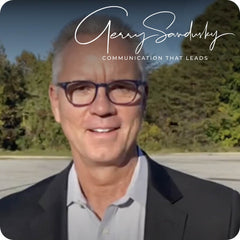Imagine a world where your creativity and interests not only inspire others but also generate a steady stream of income. Welcome to the realm of affiliate marketing through blogging—a dynamic and rewarding path for those eager to explore new horizons. Whether you're a stay-at-home parent, a digital nomad, or a tech-savvy millennial, this guide will walk you through the essential steps to create a blog that captivates audiences and maximizes your earning potential. With the right strategies, your blog can become a powerful tool for financial independence and personal fulfillment.
What Is Affiliate Marketing?
Affiliate marketing is a performance-based marketing strategy where individuals, known as affiliates, earn a commission by promoting products or services of a company through unique affiliate links. This model thrives on collaboration between three key players: the merchant (or advertiser), the affiliate, and the consumer. Affiliates leverage their platforms—such as blogs, social media, or websites—to share these links with their audience, driving traffic and sales to the merchant's site. When a consumer purchases through the affiliate's link, the affiliate earns a predetermined commission, creating a win-win scenario for both the merchant and the affiliate. This approach not only empowers individuals to monetize their content but also enables businesses to expand their reach and increase sales through authentic recommendations.
Why Is a Blog Important For Affiliate Marketing?
- Content Authority and Trust: A blog allows you to establish yourself as an authority in your niche, building trust with your audience. By consistently providing valuable and insightful content, you create a loyal readership that is more likely to trust your recommendations and click on your affiliate links.
- SEO Benefits: Blogs are a powerful tool for improving search engine optimization (SEO). By creating keyword-rich content, you can increase your blog's visibility on search engines, attracting organic traffic. This increased visibility can lead to more clicks on your affiliate links and higher conversion rates.
- Diverse Content Opportunities: Blogs offer the flexibility to create a variety of content types, such as reviews, tutorials, and comparison articles, which can effectively showcase affiliate products. This diversity allows you to cater to different audience preferences and increase engagement with your content.
- Long-Term Passive Income: Unlike social media posts that quickly disappear from feeds, blog content remains accessible and can continue to generate traffic and income over time. This longevity means that a well-written blog post can keep earning affiliate commissions long after it's published.
- Direct Audience Engagement: Blogs provide a platform for direct interaction with your audience through comments and feedback. This engagement allows you to understand your readers' needs and preferences better, enabling you to tailor your content and affiliate promotions to meet their interests effectively.
How To Create a Blog For Affiliate Marketing: Step-by-Step
Step 1: Choose Your Niche
Selecting the right niche is the cornerstone of a successful affiliate marketing blog. Your niche should align with your passions and expertise, ensuring that you can create authentic and engaging content. Consider the interests of your target audience and the potential profitability of the niche. Research market trends and competition to identify a niche that offers ample affiliate opportunities while allowing you to stand out. Remember, a well-chosen niche not only fuels your enthusiasm but also attracts a dedicated audience eager for your insights.
Step 2: Select a Blogging Platform
Once you've identified your niche, it's time to choose a blogging platform that suits your needs. WordPress is a popular choice due to its flexibility, extensive plugin library, and SEO capabilities. It allows you to fully customize your blog and optimize it for affiliate marketing. Alternatively, platforms like Wix or Squarespace offer user-friendly interfaces for those who prefer a more straightforward setup. Evaluate the features, costs, and ease of use of each platform to make an informed decision that aligns with your goals.
Step 3: Secure a Domain Name and Hosting
Your domain name is your blog's online identity, so choose one that is memorable, relevant to your niche, and easy to spell. Once you've settled on a domain name, you'll need to secure web hosting to make your blog accessible online. Hosting providers like Bluehost, SiteGround, or HostGator offer reliable services with various plans to suit different budgets. Look for hosting that provides excellent uptime, customer support, and scalability to accommodate your blog's growth.
Step 4: Design Your Blog
A visually appealing and user-friendly design is crucial for retaining visitors and encouraging them to explore your content. Choose a clean, responsive theme that reflects your brand and enhances the user experience. Customize your blog's layout, colors, and fonts to create a cohesive look that resonates with your audience. Ensure that your blog is mobile-friendly, as a significant portion of web traffic comes from mobile devices. A well-designed blog not only attracts readers but also builds credibility and trust.
Step 5: Create Quality Content
Content is the heart of your affiliate marketing blog. Focus on producing high-quality, informative, and engaging content that addresses the needs and interests of your audience. Incorporate a mix of content types, such as how-to guides, product reviews, and listicles, to keep your blog dynamic and appealing. Use SEO best practices to optimize your content for search engines, ensuring that it reaches a wider audience. Remember, valuable content not only drives traffic but also increases the likelihood of conversions through your affiliate links.
Step 6: Integrate Affiliate Links
Seamlessly integrating affiliate links into your content is essential for monetizing your blog. Choose affiliate programs that align with your niche and offer products or services that genuinely benefit your audience. Incorporate links naturally within your content, ensuring they enhance rather than disrupt the reader's experience. Be transparent about your affiliate relationships by including disclaimers, which builds trust with your audience and comply with legal requirements. Thoughtful integration of affiliate links can significantly boost your earning potential.
Step 7: Promote Your Blog
Promotion is key to driving traffic to your blog and increasing your affiliate income. Utilize social media platforms, email marketing, and online communities to share your content and engage with potential readers. Collaborate with other bloggers or influencers in your niche to expand your reach and tap into new audiences. Consider using paid advertising to boost visibility for specific posts or products. Consistent and strategic promotion ensures that your blog gains traction and attracts a steady stream of visitors.
Step 8: Analyze and Optimize
Regularly analyzing your blog's performance is crucial for ongoing success. Use tools like Google Analytics to track traffic, user behavior, and conversion rates. Identify which content resonates most with your audience and which affiliate links generate the highest returns. Use this data to refine your content strategy, optimize underperforming posts, and enhance your promotional efforts. Continuous analysis and optimization empower you to adapt to changing trends and maximize your blog's potential as a lucrative affiliate marketing platform.
Which Blog Niche Is Best For Affiliate Marketing?
The best blog niche for affiliate marketing is one that strikes a balance between personal passion, audience demand, and profitability. Ideally, it should be a niche you are genuinely interested in, as this will fuel your motivation and enable you to create authentic, engaging content. Additionally, the niche should have a sizable audience with a keen interest in the topics you cover, ensuring a steady stream of traffic to your blog. Profitability is also crucial; look for niches with a variety of affiliate programs offering competitive commissions. Popular niches like health and wellness, personal finance, technology, and lifestyle often present lucrative opportunities due to their broad appeal and diverse product offerings. Ultimately, the best niche is one where you can provide unique insights and value, setting your blog apart from the competition while effectively monetizing your content.
How Do You Choose The Right Affiliate Marketing Programs?
Choosing the right affiliate marketing programs involves a strategic evaluation of several key factors to ensure alignment with your blog's niche and audience. Start by researching programs that offer products or services relevant to your content and that resonate with your readers' interests and needs. Assess the commission structure to ensure it provides a fair and competitive payout, considering both the percentage and the potential earnings per sale. It's also important to evaluate the reputation and reliability of the merchant, as partnering with reputable brands enhances your credibility and trustworthiness. Look for programs that offer robust support, including marketing materials and tracking tools, to help you effectively promote their products. Additionally, consider the cookie duration, as longer durations increase the likelihood of earning commissions from repeat visits. By carefully selecting affiliate programs that align with your goals and audience, you can maximize your earning potential and build a successful affiliate marketing strategy.
Tips For Scaling Your Affiliate Marketing Blog For Long-Term Success
- Diversify Your Content: To keep your audience engaged and attract new readers, diversify your content by exploring various formats such as videos, podcasts, and infographics. This not only caters to different learning preferences but also enhances your blog's reach and engagement, driving more traffic to your affiliate links.
- Leverage Email Marketing: Build and nurture an email list to maintain direct communication with your audience. Use newsletters to share valuable content, exclusive offers, and personalized recommendations, encouraging repeat visits to your blog and increasing the likelihood of conversions.
- Optimize for SEO Continuously: Regularly update and optimize your content for search engines to maintain and improve your blog's visibility. Conduct keyword research, update old posts with fresh information, and ensure your site is technically sound to attract organic traffic consistently.
- Expand Your Affiliate Partnerships: As your blog grows, explore new affiliate programs and partnerships that align with your evolving content and audience interests. Diversifying your affiliate relationships can open up new revenue streams and reduce dependency on a single program.
- Invest in Analytics and Feedback: Utilize analytics tools to track your blog's performance and gather insights into user behavior. Regularly review this data to identify successful strategies and areas for improvement. Additionally, seek feedback from your audience to refine your content and affiliate offerings, ensuring they remain relevant and valuable.
Conclusion
In conclusion, creating a blog for affiliate marketing is a transformative endeavor that holds the promise of financial independence and creative fulfillment. By following the step-by-step guide outlined in this article, you can build a robust platform that not only captivates your audience but also generates sustainable income. Each step, from selecting the appropriate niche, crafting high-quality content, strategically integrating affiliate links, and scaling your efforts, contributes to your long-term success. Remember, the key to thriving in affiliate marketing lies in your ability to adapt, innovate, and consistently deliver value to your readers. As you navigate this exciting path, embrace the challenges and opportunities with confidence, knowing that your dedication and passion can turn your blog into a powerful engine of growth and prosperity.
Final Thoughts
How can you ensure your blog's brand identity resonates with your audience and stands out in a crowded market? Artlogo offers the perfect solution with unique elements such as handwritten signatures, business cards, and social media icons. Our expert designs are crafted to leave a lasting impression, helping your business shine. Discover the transformative power of Artlogo and elevate your brand presence today.
Sources






























Share to: